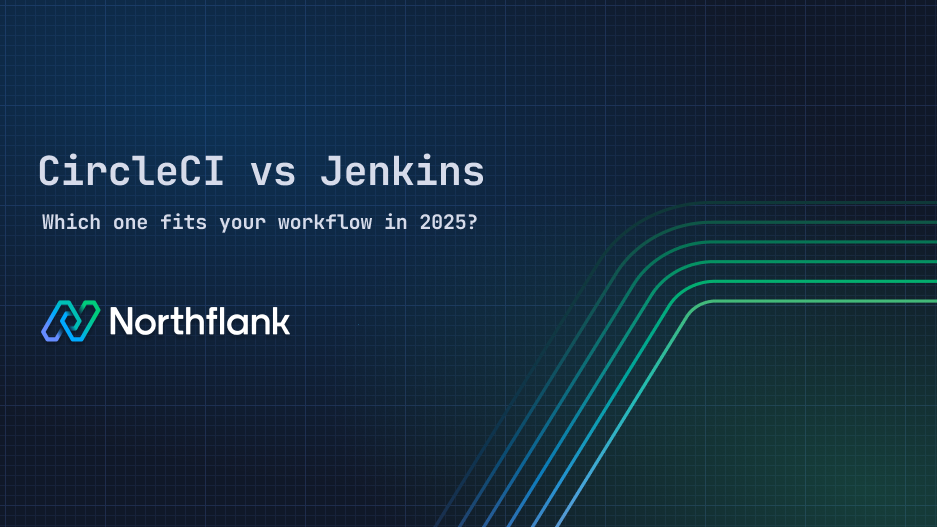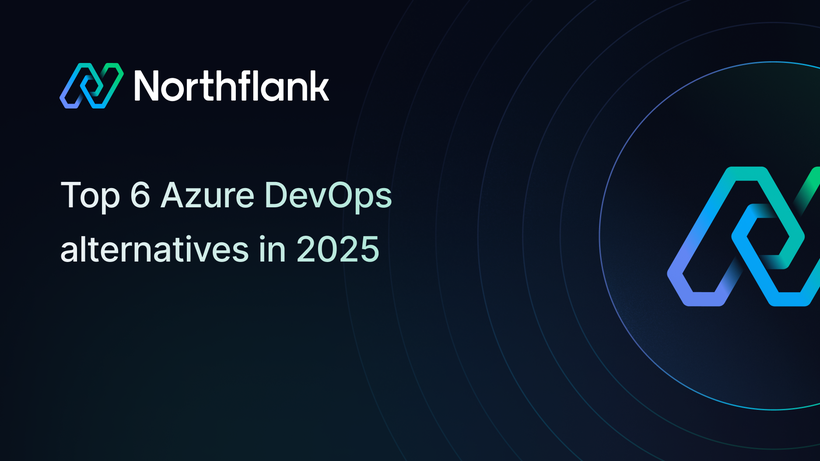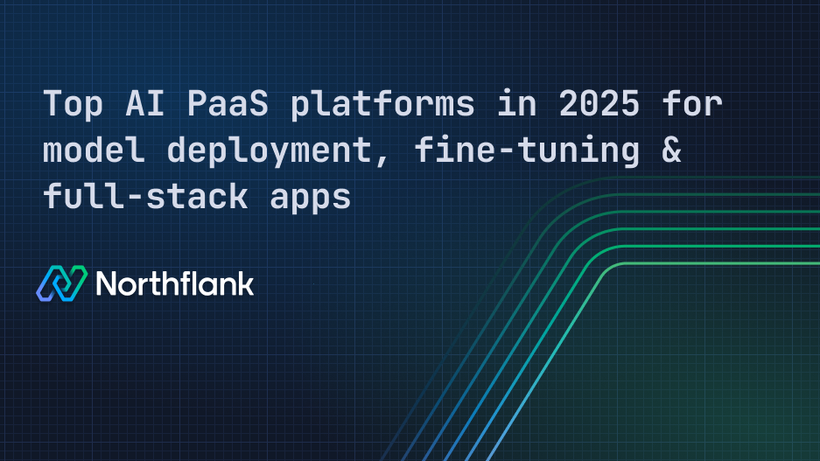

CircleCI vs Jenkins: Which one fits your workflow in 2025?
Been in a DevOps thread lately? The CircleCI vs Jenkins talk still pops up.
Some developers say Jenkins gives you all the control, but it comes with maintenance costs, outdated UI, manual setup, and constant plugin updates. Others like CircleCI’s simplicity but mention that credits can run out quickly or that the pricing becomes hard to manage as workloads increase.
So, which one’s the right fit for your team in 2025? That’s what you’ll find out.
I went through recent user reviews, Reddit threads, and hands-on comparisons to break it down clearly. If you're deciding between hosted pipelines and fully self-managed CI, this guide should help you figure out what fits your setup best.
If you’re in a hurry and want a clear view of the differences, this table highlights how CircleCI and Jenkins compare across the most relevant areas for teams choosing a CI/CD tool in 2025.
| Feature | CircleCI | Jenkins |
|---|---|---|
| Setup | Cloud-hosted by default. Just connect your repo and add a config file. | Self-hosted by default. Requires manual installation, server setup, and agent management. |
| Hosting | Runs on CircleCI’s managed infrastructure. You can also use self-hosted runners. | Typically runs on your own servers (on-prem or cloud). Full control, but more setup. |
| Config style | Uses YAML (.circleci/config.yml). Supports orbs (reusable config packages). | Uses Groovy-based Jenkinsfile or UI-based job configs. Supports freestyle and pipeline jobs. |
| Performance | Shared runners by default. Supports test splitting, parallelism, and caching. Performance and cost are tied to usage credits. | Depends entirely on your infrastructure. You manage scaling, agents, and job concurrency. |
| Pricing | Free tier with 30,000 monthly credits. Paid plans scale with usage. Some teams say costs increase quickly with parallel jobs. | Free and open-source. Costs are tied to infrastructure and internal maintenance effort. |
| User interface | Clean, modern UI with visual pipeline views and job insights. Easier to onboard. | Outdated interface. Relies heavily on plugins for visibility and usability improvements. |
| Great fit for | Teams that want fast setup, no infrastructure burden, and GitHub/GitLab integration. | Teams that need deep customization, plugin support, or full control over CI/CD workflows. |
Let’s talk about the tool that’s been powering CI/CD pipelines long before most of today’s platforms existed: Jenkins.

It’s been around for over a decade, and even in 2025, you’ll still find it running inside banks, governments, enterprise IT departments, and large engineering orgs with complex compliance needs.
Unlike CircleCI, Jenkins doesn’t run in the cloud unless you put it there. You install it yourself, manage your agents, and configure your builds from scratch. In return, you get full control over how everything runs.
And that’s what’s kept Jenkins around for so long: total flexibility, a massive plugin ecosystem, and a level of customization that newer tools don’t always give you.
Jenkins is an open-source automation server you install and run on your own infrastructure. It was originally a fork of a project called Hudson and has been maintained by a large open-source community since 2011.
It lets you define and automate everything from build steps to test stages, deployment flows, and approval gates. It’s designed for teams that need custom pipelines, care about environment-level control, or have legacy systems that don’t work with newer, hosted CI tools.
You can build pipelines using Groovy in a Jenkinsfile, or configure jobs directly in the UI. But either way, you're in charge of the setup.

Let’s see what a basic pipeline in Jenkins looks like using a Jenkinsfile. This one installs dependencies and runs tests for a Node.js project:
pipeline {
agent any
stages {
stage('Install') {
steps {
sh 'npm install'
}
}
stage('Test') {
steps {
sh 'npm test'
}
}
}
}Each stage defines a step in the process, and agent any tells Jenkins to run it on any available worker. You can customize this further by specifying node labels, environment variables, post-build conditions, and more.
With all the newer CI/CD platforms out there, you’d think Jenkins would have faded by now, but it hasn’t. And there are a few major reasons why.
- You can run it anywhere. Teams in air-gapped environments or behind firewalls still rely on Jenkins because cloud-based platforms aren’t an option.
- It’s deeply customizable. Jenkins supports over 1,800 plugins, and that flexibility is hard to match. You can integrate with just about anything.
- It handles complex workflows. If your pipeline spans multiple services, environments, and approval flows, Jenkins can model that, as long as you’re willing to configure it.
A developer on Reddit put it like this:
“Jenkins, albeit great, has been gradually fading. But it still works well for teams that need full control.”
So while Jenkins may not be the default choice for new projects, it’s still deeply entrenched in teams with long-lived systems and strict infrastructure requirements.
All that control and flexibility comes with a cost, and for many teams, it’s a steep one.
- Manual maintenance. You’re in charge of installing updates, managing agents, and resolving issues when plugins break.
- Outdated interface. The UI hasn’t changed much in years, and even seasoned users say it feels clunky.
- Steep learning curve. If you're not already familiar with Groovy, Jenkinsfiles, or plugin configurations, onboarding takes time.
Recent G2 reviews reflect this clearly:
“Initial setup takes a lot of time and effort... a dedicated team is necessary.”
— [G2 reviewer, April 23, 2025]

“The UI hasn’t changed in a long time and needs improvement.”
— [G2 reviewer, January 29, 2025]

These aren’t edge cases; they’re the experience of many teams still managing Jenkins in 2025.
See more: Jenkins alternatives in 2025: CI/CD tools that won’t frustrate DevOps engineers
So, Jenkins gives you control, but what if your team doesn’t want to manage CI infrastructure at all?
That’s where CircleCI comes in. Unlike Jenkins, CircleCI runs in the cloud by default, and most teams can start building in minutes without installing anything. You connect your GitHub or GitLab repo, add a .circleci/config.yml file, and your pipelines kick off.

CircleCI provides hosted runners, usage-based pricing, and a more modern developer experience out of the box. For teams that prioritize speed over flexibility, it’s often the simpler choice.
CircleCI is a CI/CD platform that automates your builds, tests, and deployments, with no servers to install or agents to manage if you're using the default cloud-hosted setup.
Let’s say a developer pushes code to a repo. CircleCI picks that up automatically, runs tests in a clean containerized environment, and deploys if everything passes. Everything is defined in a YAML file located in .circleci/config.yml.

Unlike Jenkins, which often needs plugins to do anything useful, CircleCI has built-in support for things like Docker, caching, test splitting, and secrets management, all surfaced through its dashboard and APIs.
Let’s see a minimal setup that installs dependencies and runs tests in a Node.js app:
version: 2.1
jobs:
build:
docker:
- image: cimg/node:14.17
steps:
- checkout
- run: npm install
- run: npm test
workflows:
version: 2
build_and_test:
jobs:
- buildThis file lives in .circleci/config.yml. You don’t need to set up agents or servers. CircleCI handles that through its cloud environment unless you’ve configured self-hosted runners.
A big reason is the setup time. Jenkins may give you flexibility, but CircleCI gets you running faster with less infrastructure overhead. That’s especially true for small teams or startups that want to avoid managing a Jenkins stack.
One developer on Dev.to said:
“We switched from Jenkins to CircleCI and cut our CI maintenance time by 80%.”
You also get:
- Hosted runners with automatic scaling
- Parallelism and test splitting out of the box
- Orbs (reusable, versioned packages of pipeline logic)
All without touching a plugin directory.
For all its ease, CircleCI isn't perfect. There are some tradeoffs:
- It’s YAML-only. You don’t get multiple config formats like Jenkins (e.g. UI jobs or Groovy scripts).
- Complex workflows get hard to model. Managing multi-service builds or conditionals can require nested YAML that’s hard to manage.
- Pricing scales quickly. CircleCI uses a credit-based system. Each build minute costs credits based on the compute class.
- Some Docker and Kubernetes features are gated behind paid plans. Self-hosted runners, Kubernetes support, and resource-intensive builds often require a Performance or Scale plan.
- GPU support exists, but only on Scale or Custom plans, or through self-hosted runners that you set up and manage.
So while CircleCI is a great default for teams that want simplicity, it’s not always the best choice if you need detailed control or are operating at large scale.
See Top CircleCI alternatives in 2025
After seeing how both tools work in practice, the main question is: which one fits your setup?
Jenkins and CircleCI are built for very different environments. One isn’t “better” than the other across the board, but depending on your team, one is likely a better fit.
1. You need plugin-level control
Jenkins supports over 1,800 plugins, and you can wire up almost any tool, service, or condition into your pipeline. That level of flexibility is hard to match, especially if you're modeling a workflow with non-standard approval gates, custom test setups, or multiple internal systems.
2. You run in air-gapped or regulated environments
Jenkins is one of the few CI tools that works well on isolated networks, without any cloud dependencies. It’s still the default for teams behind strict firewalls, compliance layers, or on-prem-only setups.
3. You already have Jenkins set up across teams
If your org already runs Jenkins reliably with working pipelines, moving off it just for the sake of modernization may not be worth the effort.
1. You want to move fast with minimal setup
CircleCI’s hosted environment means no agents, no infrastructure to manage, and builds start running as soon as you commit a config file. Most new teams are up and running in under an hour.
2. You prefer a SaaS platform
CircleCI is fully managed, with built-in scaling, dashboards, metrics, and secrets. You don’t need a DevOps team to keep it online.
3. You don’t need deep custom plugin workflows
If your pipelines are straightforward, run tests, deploy code, maybe cache a few things, CircleCI handles all of that without the complexity of Jenkins.
If CircleCI feels too limited and Jenkins is too much work to maintain… there’s another path.
Northflank gives you the flexibility of a self-managed CI/CD platform without requiring you to configure agents or manage plugins.
You don’t need to install runners, set up a VM cluster, or wire together multiple tools just to get a working pipeline. Every service on Northflank comes with built-in CI/CD that’s tied to your Git commits, and you can deploy using Dockerfiles, buildpacks, or prebuilt containers.
It also works in both directions:
- You can run everything on Northflank-managed infrastructure
- Or bring your own cloud (BYOC) and deploy to your own Kubernetes cluster

Northflank brings together:
- Git-based CI/CD that triggers on push (no extra integration logic required)
- Secrets, logs, metrics, and container builds all in the same interface
- Support for background jobs, cron tasks, and preview environments without extra setup
You’re not locked into GitHub, and you’re not left managing Jenkins.
Also, Northflank supports GPU workloads out of the box, unlike CircleCI which requires a high-tier plan or manual runner setup. See how it works.

So if your team wants more control than CircleCI allows, but less overhead than Jenkins demands, this might be the middle ground that works.
Still deciding? These are some of the questions developers regularly ask when comparing CircleCI and Jenkins, answered with the facts that matter.
It depends on what you're optimizing for. CircleCI is faster to start with and handles infrastructure for you. Jenkins gives you more control and customization, especially for edge-case workflows or on-prem setups. If your team needs to run pipelines in an isolated network or with complex plugin logic, Jenkins still makes sense. For most teams starting fresh, CircleCI is easier to adopt.
Jenkins hasn’t changed much in terms of UI or core architecture. It still relies heavily on plugins (some of which are no longer maintained), and configuration is often handled through Groovy or XML. For developers used to modern platforms with built-in dashboards and YAML pipelines, Jenkins can feel slow and maintenance-heavy. That said, it’s still widely used in enterprise environments because of its flexibility.
- Configuration is YAML-only and can become complex in large workflows
- Some features like Kubernetes runners or premium Docker resources are locked behind paid plans
- Cost scales with usage, which can be unpredictable for high-frequency builds
- No built-in dashboard for managing multiple repos or projects together
Not directly out of the box, but there are plugins that allow Jenkins to run agents inside Kubernetes clusters. You’re responsible for setting that up and maintaining it. Jenkins itself doesn’t have native support for container orchestration; it relies on how you configure your infrastructure.
CircleCI supports any language that runs in a Docker image. That includes Node.js, Python, Java, Go, Ruby, PHP, Rust, C#, and more. You can use official CircleCI images or bring your own. There are no hard language limitations as long as the image contains the right runtime.
There’s no single best. It depends on your environment and team. CircleCI is great for cloud-based teams that want to move fast and don’t want to manage infra. Jenkins is still the right call for teams that need full control, are working in regulated setups, or already have Jenkins in place. And if you’re looking for something in between, with Git-based automation and built-in CI/CD, Northflank could be a better fit.
If you’ve made it this far, you’ve seen what both CircleCI and Jenkins bring to the table.
CircleCI makes it easy to get started. You connect your repo, push a config file, and let the platform handle the rest. It’s fit primarily for teams that want to skip infrastructure management and don’t need deep customization.
Jenkins, on the other hand, is all about flexibility. If your pipelines need to run on specific environments, use uncommon plugins, or live entirely behind a firewall, it’s still one of the most capable tools out there (as long as you're ready to manage it).
What if neither tool suits your needs?
You may want something self-hostable but with less maintenance burden than Jenkins. Or you may want a platform that gives you Git-based automation, container builds, and log visibility without locking you into a specific cloud provider or requiring dozens of plugins.
That’s where Northflank comes in.
You can see how it works in this quickstart guide or spin up your own service in minutes. Start by creating a free account.

